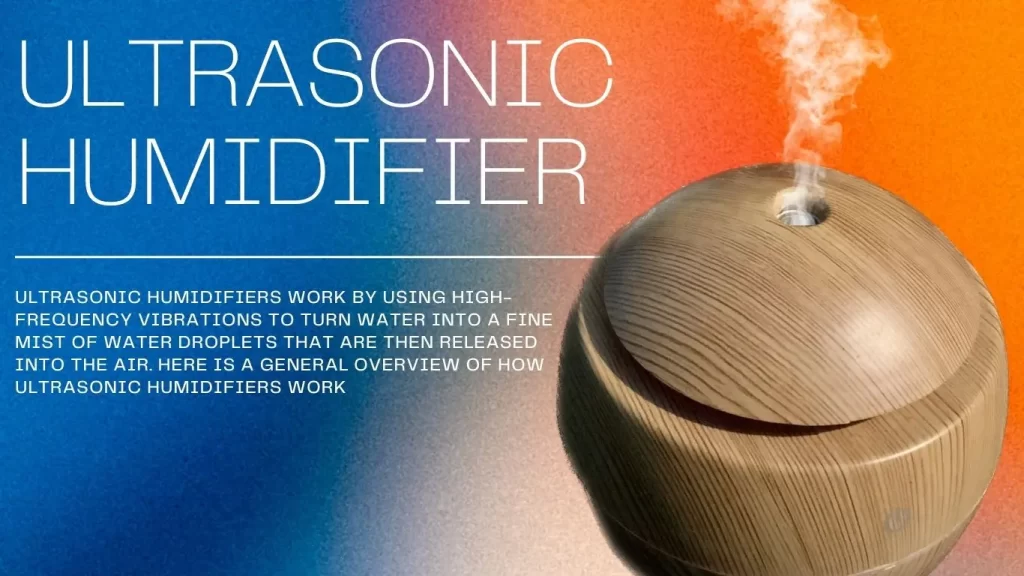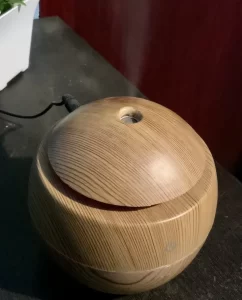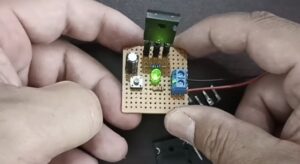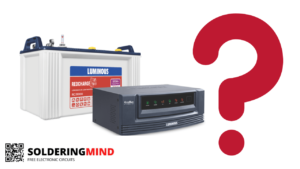
An ultrasonic humidifier is a type of humidifier that uses high-frequency ultrasonic vibrations to create a fine mist of water. The fine mist is then released into the air to increase the humidity level in a room.
How Does an Ultrasonic Humidifier Works?
The humidifier has a small metal plate called a diaphragm. The diaphragm vibrates at an ultrasonic frequency. Due to the high frequency, it breaks the water particles into tiny droplets that are released as a cool mist. These droplets are so small that they quickly evaporate into the air, creating a mist that is easy to breathe and that can help alleviate dry air-related symptoms such as dry skin, congestion, and sore throat.

Ultrasonic humidifiers are available in various sizes, shapes, and designs and are typically easy to use and maintain. They are also generally quieter than other types of humidifiers, making them a popular choice for use in bedrooms or other quiet spaces.
However, it’s important to note that ultrasonic humidifiers can create a cloud of white mineral dust that can settle on surfaces in the room, particularly if hard water is used in the humidifier. To avoid this, many ultrasonic humidifiers come with demineralization cartridges or filters. this can prevent minerals from the water before it’s released as mist.
Ultrasonic Vs Evaporative Humidifier
Both ultrasonic and evaporative humidifiers are popular choices for adding moisture to indoor air. Here are some key differences between the two:
| Feature | Ultrasonic Humidifiers | Evaporative Humidifiers |
|---|---|---|
| Technology | Uses high-frequency vibrations to produce a fine mist of water droplets | Uses a fan to blow air over a wet wick or filter, causing water to evaporate and be released into the air |
| Maintenance | Regular cleaning of water tank and nebulizer | Regular cleaning and replacement of wick or filter |
| Noise level | Tend to be quieter due to no fan, but may produce a high-pitched sound from ultrasonic vibrations | May produce noise from fan operation |
| Energy efficiency | Tend to use more energy due to the use of nebulizer | Tend to use less energy due to no nebulizer |
| Effective coverage | Best suited for smaller rooms | Best suited for larger rooms due to wider coverage |
This table highlights some of the key differences between ultrasonic and evaporative humidifiers, including their technology, maintenance requirements, noise level, energy efficiency, and effective coverage.
Benefits of Ultrasonic Humidifier
Ultrasonic humidifiers have several benefits, including:
- Quieter operation: Ultrasonic humidifiers are generally quieter than other types of humidifiers because they don’t have a fan. This can be especially beneficial if you plan to use the humidifier in a bedroom or other quiet space.
- Energy efficiency: Ultrasonic humidifiers tend to use less energy than other types of humidifiers because they don’t have a heating element or fan. This can result in lower electricity bills over time.
- Easy to clean: Ultrasonic humidifiers are generally easy to clean because they don’t have a filter or wick that needs to be replaced. Instead, you simply need to clean the water tank and occasionally clean the nebulizer.
- No white dust: Because ultrasonic humidifiers don’t use a wick or filter, they don’t produce the white dust that can sometimes be a byproduct of evaporative humidifiers. This makes ultrasonic humidifiers a better choice for people with allergies or respiratory issues.
- Efficient humidity output: Ultrasonic humidifiers can produce a fine mist of water droplets that quickly evaporate into the air, making them more effective at adding moisture to the air than some other types of humidifiers.
Overall, ultrasonic humidifiers are a great choice for people who want a quiet, efficient, and easy-to-use humidifier that doesn’t produce white dust.
Disadvantage of Ultrasonic Humidifier
While ultrasonic humidifiers have several advantages, they also have a few disadvantages that are worth considering before making a purchase:
- Risk of over-humidification: Ultrasonic humidifiers can quickly add moisture to the air, which can lead to over-humidification if not used properly. This can cause condensation on walls and other surfaces, as well as promote the growth of mould and bacteria.
- Need for filtered or distilled water: Because ultrasonic humidifiers don’t have a filter or wick to remove impurities from the water, it’s recommended to use filtered or distilled water to avoid releasing impurities into the air. This can add an additional cost to the maintenance of the humidifier.
- Potential for white dust: While ultrasonic humidifiers don’t produce the white dust that can be a byproduct of evaporative humidifiers, they can still produce a cloud of white mineral dust if used with hard water. This can be harmful to breathe in and can also leave residue on nearby surfaces.
- Noise from ultrasonic vibrations: While ultrasonic humidifiers are generally quieter than other types of humidifiers, the high-frequency vibrations that produce the mist can create a high-pitched sound that some people find annoying.
Summary
Ultrasonic humidifiers work by using high-frequency vibrations to turn water into a fine mist of water droplets that are then released into the air. Here is a general overview of how ultrasonic humidifiers work:
- Water is added to the water tank of the humidifier.
- A small nebulizer, or disk, located in the water tank vibrates at a very high frequency (typically between 1.5 and 3 MHz).
- These vibrations create ultrasonic waves that cause the water to break apart into small droplets that form a mist.
- A fan located inside the humidifier blows air over the nebulizer and the mist, propelling the mist out of the humidifier and into the surrounding air.
- The mist then evaporates into the air, increasing the humidity level in the room.
Some ultrasonic humidifiers also have additional features, such as adjustable mist output levels and built-in humidistats. This will measure and control the humidity level and LED lights that indicate when the water level is low. It’s important to follow the manufacturer’s instructions for proper use and maintenance to ensure the humidifier functions effectively and safely.




